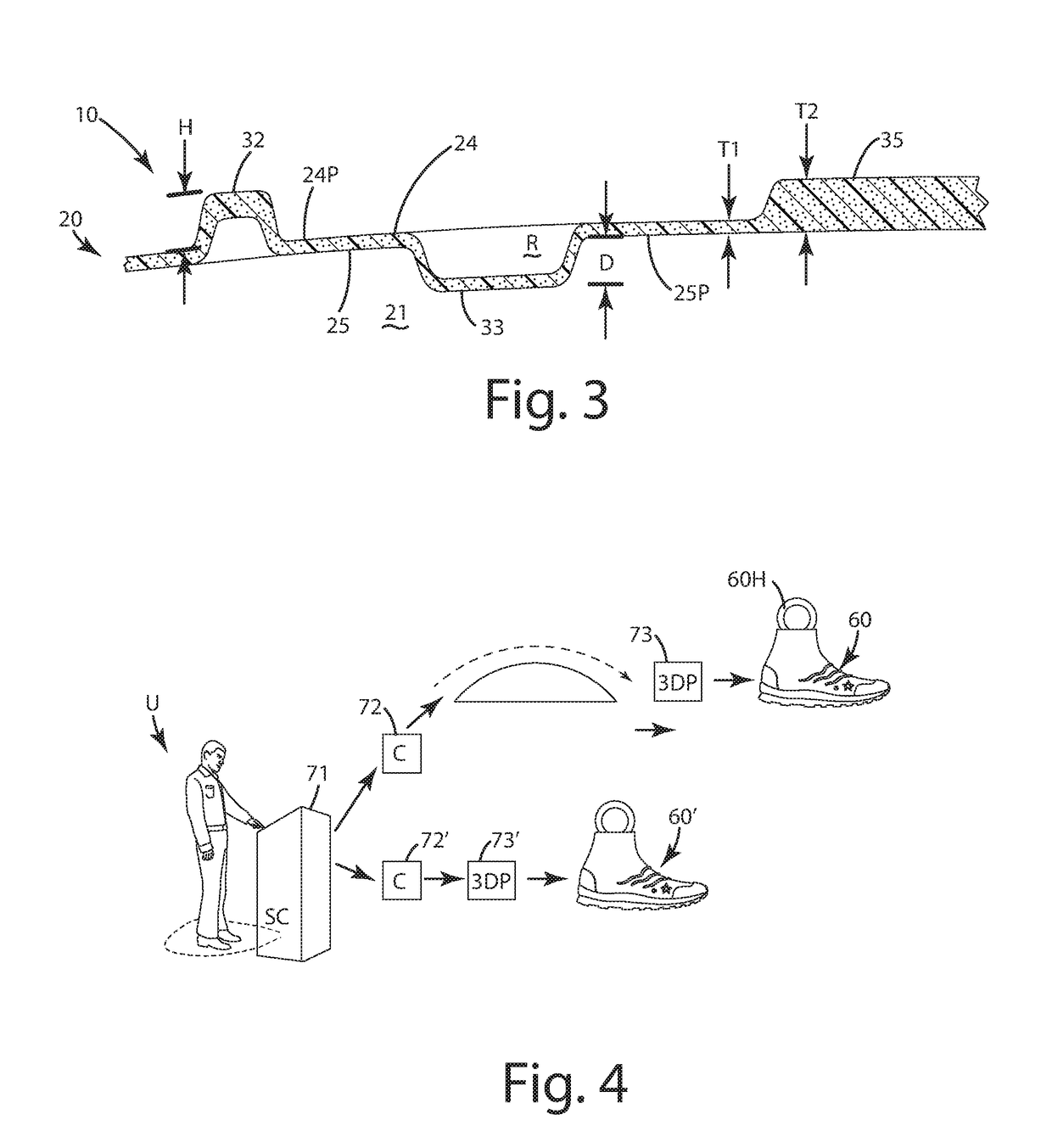Method of manufacturing spray-on footwear
a technology of footwear and spray-on, which is applied in the field of footwear, can solve the problems of increasing labor costs, increasing labor costs, and most still impaired by associated labor costs and overhead, and achieves the effects of reducing labor and material costs, reducing labor costs, and minimal manual labor
- Summary
- Abstract
- Description
- Claims
- Application Information
AI Technical Summary
Benefits of technology
Problems solved by technology
Method used
Image
Examples
Embodiment Construction
[0028]A current embodiment of the footwear is illustrated in FIG. 1, and generally designated 10, with the related method of manufacture illustrated in FIG. 2, and designated 100. The finished footwear 10 includes a flexible, non-woven upper 20, formed via a spray-on fabric process as described below, joined with a sole assembly 50 having a midsole 52 and outsole 55. The non-woven fabric upper 20 includes a foot-receiving upper interior 21 that can be closed at the bottom or lowermost portion 22 due to the spray-on process forming a closed bottom of the upper. The footwear 10 can include a footbed and / or insole (not shown) disposed in the interior 21 of the upper 10.
[0029]Referring to FIG. 2, the method 100 of the current embodiments generally includes steps of providing a three dimensional last 101, where the last is optionally constructed using last data via additive manufacturing process; applying a spray-on fabric or material to exterior surfaces of the three dimensional last 10...
PUM
| Property | Measurement | Unit |
|---|---|---|
| boiling point | aaaaa | aaaaa |
| height | aaaaa | aaaaa |
| height | aaaaa | aaaaa |
Abstract
Description
Claims
Application Information
 Login to View More
Login to View More - R&D
- Intellectual Property
- Life Sciences
- Materials
- Tech Scout
- Unparalleled Data Quality
- Higher Quality Content
- 60% Fewer Hallucinations
Browse by: Latest US Patents, China's latest patents, Technical Efficacy Thesaurus, Application Domain, Technology Topic, Popular Technical Reports.
© 2025 PatSnap. All rights reserved.Legal|Privacy policy|Modern Slavery Act Transparency Statement|Sitemap|About US| Contact US: help@patsnap.com



